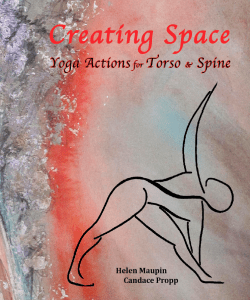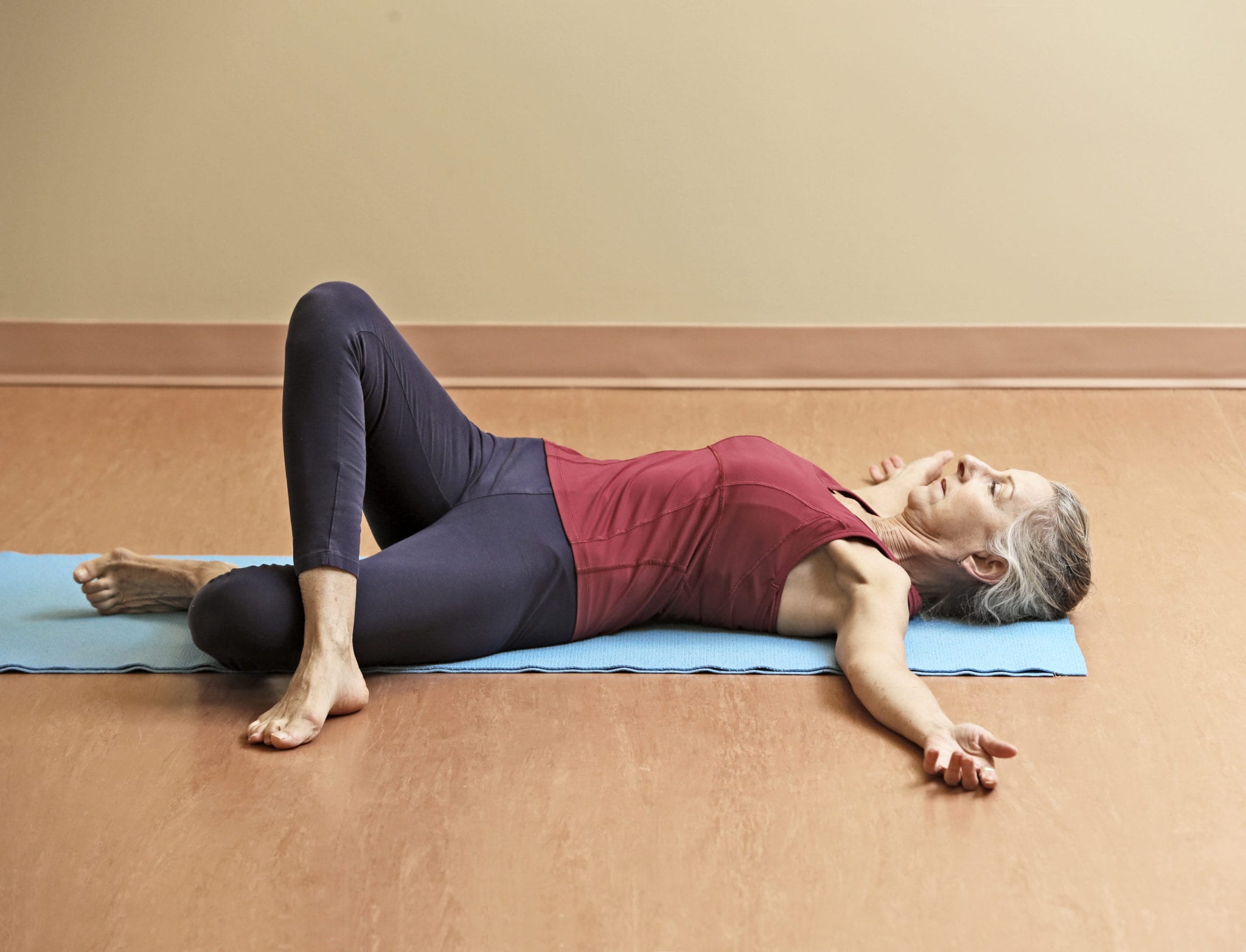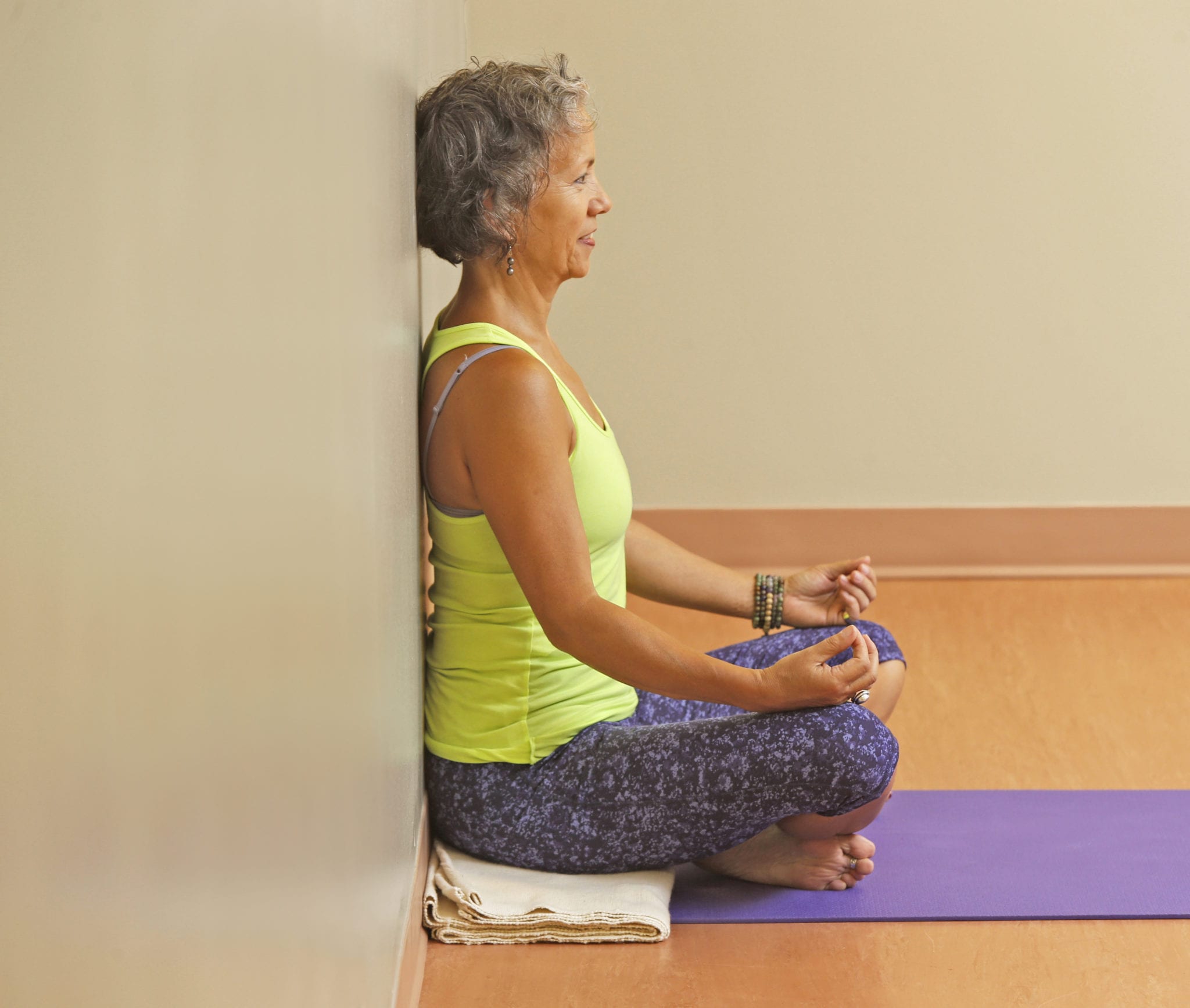Time to straighten up and be kind to your spine
Our physical body emulates Mother Nature’s flora. In common, we share roots, trunks and branches. Not unlike plant roots, our feet, legs and pelvis (including our sacrum and tailbone) ground us to the Earth’s energy. This allows our torso, spine, arms and head to “lighten up” and lift toward the sky. In yoga asanas (poses), a primary part of practice is learning to both ground and lift simultaneously.
A simple guide to remember is our pelvis and legs are always moving in the direction of our feet, and our spine (lumbar, thoracic and cervical) is always lifting in the direction of our head. This simple, but not always easy, two-directional movement maintains space between each of the spinal vertebrae, which enables us to unlock the pelvis from the legs when we bend forward and ensures lower back health while doing so.
The lower back (between the waist and sacrum) is comprised of five lumbar vertebrae (L1 to L5) and has a concave (inward) curve. Although the lumbar spine may lose some of its curve in forward bends and twists, pressing these vertebrae outward for extended periods of time is unhealthy. Slouching while seated in a chair is a prime example. When the lumbar is pushed out of its natural curve, too much stress is applied to the discs situated between the vertebrae. This stress is most apparent at the base of the spinal column on the L5 sacral disc and the L4-5 disc. These two discs bear the brunt of our body weight or whatever else we carry with us. Heavy weight tends to squeeze fluid out of these discs, leaving less space between the vertebrae, which are then triply vulnerable when combined with poor posture and weak abdominal muscles.
In addition, when we ground or stabilize the sacrum and then bend the spine forward, it acts as a lever, exerting its greatest force first at the L5-S and then at the L4-5. Although strong and supple abdominal and lower back muscles ease the stress, this most-often injured region of the spine requires safe care and practice, particularly when forward folding and twisting.
Fortunately, not all forward bends are equal stressors on the lower back. In reclining forward bends (Supta Paschimottanasana), gravity does not compress the discs. Similarly, in standing forward bends (Prasarita Padottanasana) where the spine hangs down toward the earth, gravity elongates the spine and widens the disc spaces. Only in seated forward bends (Balasana) can gravity compress and stress the discs.
Further stress is added on the lower lumbar discs when we are unable to tilt the pelvis forward or unlock it from the thigh bones. The primary culprits are often tight hamstring muscles or hip rotators, which is why a yoga sequence typically leads with standing poses to warm up the legs and hips. This provides greater mobility in the lower back and works to maintain the natural S-curves of the spine.
The yoga actions that follow encourage core strengthening, safe forward folding and gentle twisting to alleviate any tension and tightness in the lower back. Do not forget to end by resting in Savasana (Corpse pose), which allows the various structures of the spine to fully relax. As you may have already heard, Savasana is a rejuvenating restful pose to counter our hectic, fast-paced lives.
Action: Bend at your front hip creases, soften your hip muscles and roll your pelvis over your legs (the heads of your thigh bones). For more advanced practitioners, also lift your lower abdominals inward toward your lower back (the inner faces of the sacrum and lower lumbar). 
UTKATASANA (Chair pose)
Stand with your feet slightly apart and toes pointing forward. Find the action as you bend your knees and come into a slight squat. Remember, the sacrum and tailbone draw down to the heels. You can keep your hands on your hips or extend your arms overhead. Hold for five breaths, come up to rest, then repeat two more times.
BALASANA (Child’s pose)
From a kneeling position, bring your big toes together and take your knees mat-width apart or slightly narrower. Sit on your heels, if possible, or on support as shown. Release your torso forward, resting your head onto the floor or a support. Find the action. Hold for five to 10 breaths.
ARDHA JATHARA PARIVARTANASANA (Lying down twist)
To release your lower back, lie down with your knees bent and your feet on the floor. Place your right ankle on your left thigh just above your left knee. On an exhale, let the sole of your right foot release to the floor or a support while keeping both shoulders and arms on the floor. Hold for three to five minutes and repeat with your left ankle on your right thigh.
SUKHASANA (Easy pose)
Sit with your sacrum and the back of your heart space resting into the wall. Use support under your sits bones and knees (particularly if your knees are higher than your front hip bones) in order for your lower back to naturally move away from the wall. Rest the back of your head at the wall unless this is uncomfortable or you need to force it to do so. Hold for 10 breaths, change the crossing of your legs and hold for an additional 10 breaths.
 Winnipeggers Helen Maupin (righttojoy.com) and Candace Propp (natureofcontentment.ca) are 500-hour certified yoga teachers and authors of the Creating Space: Yoga Actions book series. To purchase print or ebooks, visit here. For yoga teacher training with them and Stacy Schroder register at sereneyogastudio.com.
Winnipeggers Helen Maupin (righttojoy.com) and Candace Propp (natureofcontentment.ca) are 500-hour certified yoga teachers and authors of the Creating Space: Yoga Actions book series. To purchase print or ebooks, visit here. For yoga teacher training with them and Stacy Schroder register at sereneyogastudio.com.







